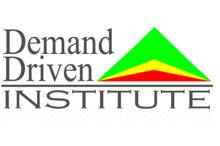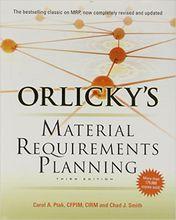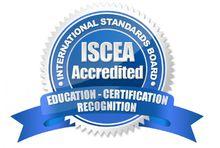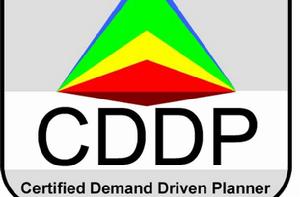介紹
 DDI
DDIDDI是由前APICS的CEO,Carol Ptak和Chad Smith合作創立,兩人也合作出版了Orlicky’s Material Requirements Planning一書。DDI在短短不到三年的時間內,就有1000人參加CDDP項目。[1]Demand Driven Institute協會是通過培訓,致力於推廣DDMRP(Demand driven MRP)理論的機構,參加培訓的考生如果最後能夠通過考試,能夠獲得DDI與ISCEA(International supply chain education alliance)共同頒發的CDDP(Certified demand driven planner)證書。CDDP已經在短短几年內在全世界迅速擴展開來。
 DDMRP
DDMRPDDMRP是一個正式的計畫和執行方法,旨在糾正傳統MRP的不足和不恰當的規則, 提供今天不穩定的,複雜的和以服務導向的供應及製造業場景。 DDMRP是用一個創新的多層級的拉動式方法來計畫庫存和原材料。他能夠讓公司更加靠近實際市場需求,在計畫和執行時,促進更好更快的決策和行動。DDMRP在《Orlicky’s Material Requirements Planning》一書中有詳細的介紹。
CDDP與CPIM
CDDP和APICS和CPIM(Certified in Production & Inventory Management)都是國際認可的行業證書,兩者都致力於最佳化流程和供應鏈職業經理人和計畫人員所需要的技巧和能力。,但是,兩者在範圍,期間和重點並不一樣,兩者是相互補充的。
在範圍和期間上,CPIM由5個分開的模組和這些5個模組考試組成,通常情況下,CPIM的準備需要1-1.5年左右。CPIM項目是相對複雜的,他廣泛的覆蓋了技術上的,功能上的內容:庫存計畫,產能規劃,主生產計畫和S&OP。同時,他也覆蓋了需求計畫和預測,績效管理和質量控制。因為他範圍廣,而且具有長期的國際認可,CPIM是那些想要確保他們能夠具備掌控整個運營能力的供應鏈經理/專員的標桿。CPIM認證資格考試自1973年舉辦至今,在全球已有約100,000名的CPIM人才活躍於各產業領域。他們擁有在需求管理、銷售及運營計畫、主生產排程、物料計畫、 能力計畫、採購與供應、供應商關係管理、績效評估、質量控制和持續改進等方面的基本知識、概念、專業技能以及策略意識。
 Orlicky's MRP
Orlicky's MRP而CDDP是在近期(2011年)由Demand driven協會的創始人Carol Ptak和Chad Smith發展起來的,目的是為了傳授和闡明需求驅動計畫的方法,也就是在《Orlicky’s Material Requirements Planning》一書中有詳細介紹的DDMRP(Demand Driven Material Requirements Planning_理論。 具體說來,CDDP廣泛的覆蓋了DDMRP和庫存管理的知識體系,還有一定的產能規劃,主生產計畫和S&OP的內容。
更小的範圍內並且相對集中的CDDP,相比於CPIM,實質上已經縮短的期間。一般情況下,參與者要參加2天的培訓項目,還有閱讀和自學部分來完成網路考試。準備的時間是根據學員的知識水平和專業程度而定的。
國際聲譽
 ISCEA
ISCEA儘管CDDP剛剛推行不久,但已經獲得了ISCEA的支持 ,並有IISB(International Standards Board)授權。 Gartner於2014年12月,在其供應鏈計畫證書項目的市場指南中列舉了10個計畫證書相關證書中,也提到了CDDP, 其不斷提升的聲譽更加證明了其所覆蓋的需求驅動理論的實用價值。
CDDP項目內容
CDDP是由10個項目組成,在2天(16小時)內完成培訓,而測試是在培訓之後,預約考試時間,通過ISCEA的網路電子監考完成的,只有通過了考試的人才有資格獲得CDDP證書。
模組一:MRP in the Modern World – the materials challenge in the 21st Century
•Key questions for planning and flexibility
•Dealing with Variability
•Materials or Capacity - Where to Focus First
•Continued Relevancy of MRP formal planning
•The Challenge of MRP in Today’s Environment
•MRP and Pull-Based Methods (e.g. Lean, DBR)
•The Stagnation of MRP
•The MRP Conflict
模組二:Demand Driven Material Requirements Planning Introduction
•What does “Demand Driven” mean?
•Blending Independence and Dependence
•Part Types in DDMRP
•Planning and Execution
•The Five Primary Components of Demand Driven MRP
•DDMRP Comparison to Past Practices
模組三:Strategic Inventory Positioning
•The Positioning Factors
•ASR Lead Time
•ASR Lead Time and Matrix BOMs
模組四:Distribution Network Positioning
•Distribution network factors
•Cumulative variability
•Demand driven versus push and promote
•Network Configurations and Options
模組五:Buffer Profile and Level Determination
•Inventory – Asset or Liability
•Buffer Profiles
•Buffer Zones
•Calculating Buffer Levels
•Continuous Improvement and Buffers
•Buffer Level Summary
模組六:Dynamic Buffers
•Recalculated Adjustments
•Planned Adjustments
•Manual Adjustments
模組七:Demand Driven Planning – Stocked Parts
•Part Planning Designations
•The DDMRP Planning Process
•Supply Order Generation for Stocked Items
•DDDRP Supply Order Generation Considerations
•Supply Generation for Non-Stocked Items
•Decoupled Explosion
模組八:Highly Visible and Collaborative Execution
•Challenging Priority by Due Date
•Buffer Status Alerts
•Synchronization Alerts
•Execution Collaboration
模組九:DDMRP and Master Scheduling
•DDMRP Impacts to a Master Production Schedule
•DDMRP and Capacity Scheduling Implications
•DDMRP and Sales and Operations Planning
•DDMRP impacts to ERP
模組十:DDMRP Performance Reporting and Analytics
•DDMRP Performance Reporting
•Analytics
•DDMRP Solution Summary

